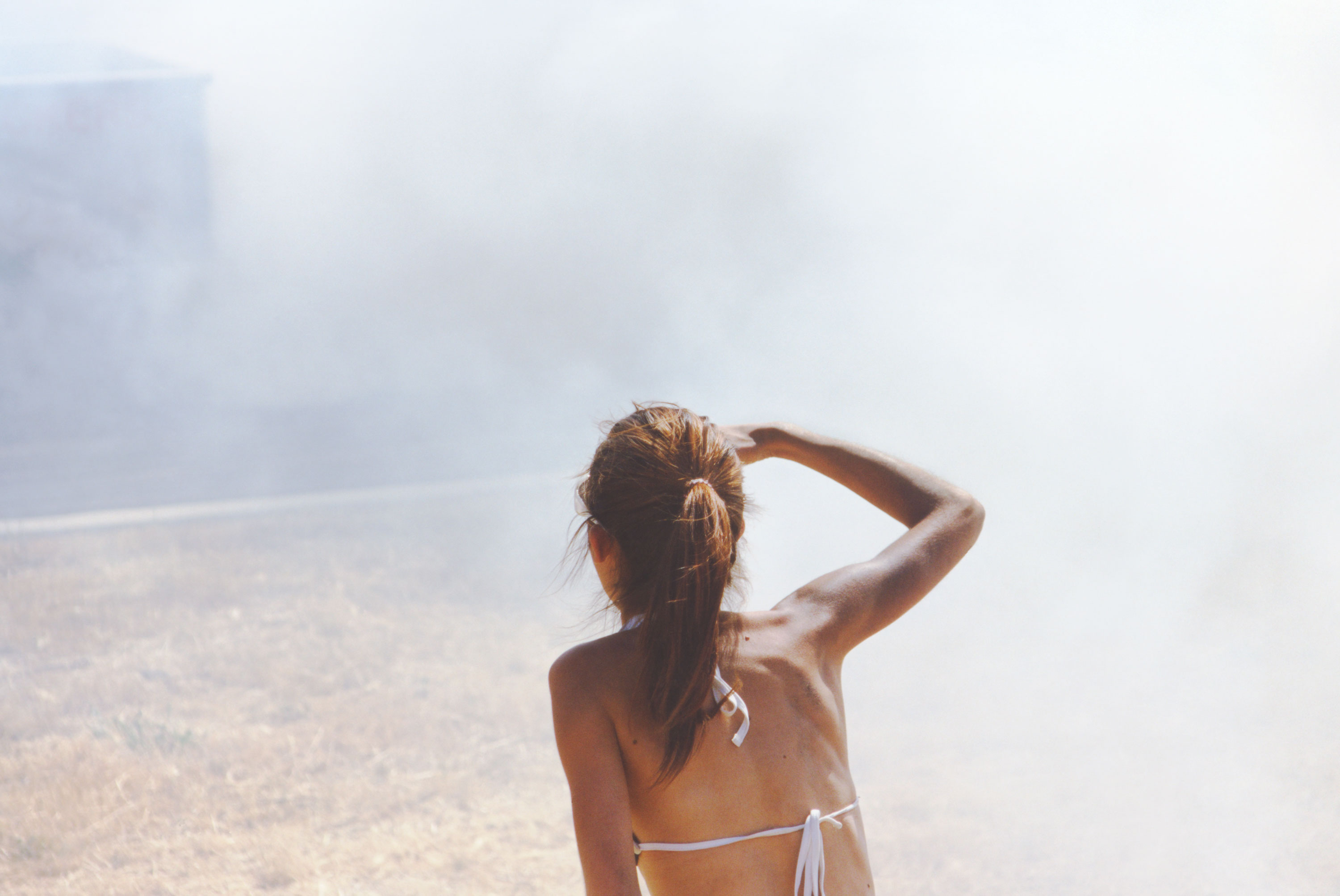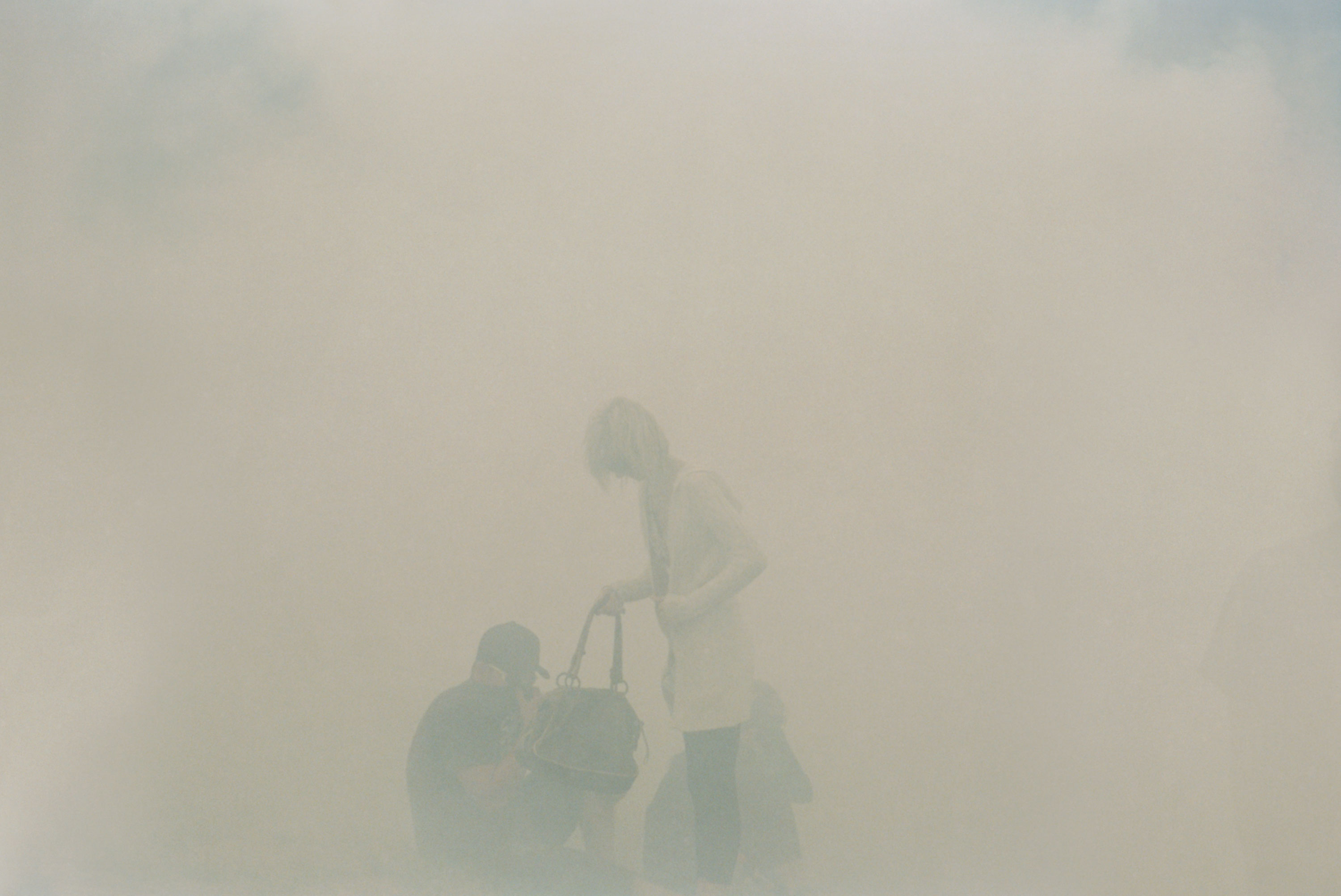Angry Black Snake.
Words by Karen Burns.
Landscapes hardly seems an appropriate term to describe these environments where the participants are caught amid conditions that render it impossible to discern any contours of a larger environment. The disappearance of landscape in this series of photographs and the dominance of indeterminate locations obscured by mist or smoke, focuses the attention on immediate sensory affects and seems to record other emotional registers: at the very least, the physical difficulty produced by these kinds of conditions and traces of emotional disturbance.
In Angry Black Snake, the images present a consistent interest in dust storm or smoke storm effects and groups of figures – some in pairs, some disparately joined in straggling groups. The figures appear as spectators of an event, but the nature of the event remains indecipherable to the viewer outside the photograph and perhaps to the depicted viewers as well. The environmental conditions preclude the clarity offered by a view, but the photographs compound this absence of vision and information. The terrain shown in the photographs offers few clues to the nature of the event being witnessed and experienced. We do not know whether the drama is one of environmental event, such as fire, or whether the atmospheric disturbances are the side effects another event such as smoke, wind and dust storm trailing in the wake of high-speed racing. The images refuse to offer us a chain of cause and effect and fail to diagnose the meaning of what is represented.
From this tension several interesting things emerge.
The emotional responses of figures cannot not be read on their faces. Instead, the meaning of the figures is outlined in their gestures: eyes are constantly shielded, backs are turned against the weather, a woman comforts a young boy – kneeling with her arms around him, she shelters him from the storm. Many of the figures seem to be struggling with these environmental conditions. In a rare photograph where figures gaze towards the camera, these spectators are placed in the middle distance and their faces are still unreadable in detail.
Many things – content, landscape, people – are obscured and unknown in this work. The images are curious rather than disturbing, but they do raise a larger unease about blockages to vision, knowledge and understanding, the unknown connection between things, indecipherable phenomena, and determinate effects of environment (no matter the cause) on human beings. They take their place as well in a larger move in arts practice towards post-representational art: to the registration of sensation and affects rather than decipherable symbols or narratives. Nevertheless, these images do seem to represent a larger cultural formation marked by a sense of environmental disturbance, and the failure of connection between events and consequences. Acts of human agency seem reduced in scope; people act as witnesses and their bodies struggle with the uncomfortable physical conditions.
Karen Burns teaches in the design program at Monash University and writes on contemporary architecture and art, as well as architectural theory and history. (At the time of writing)


















